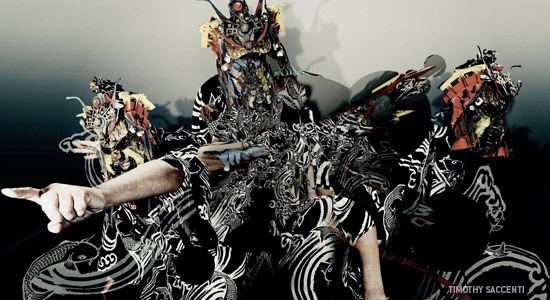Photograph courtesy of Timothy Saccenti
The Rammellzee may have left this mortal coil five years ago but he’s been living with me for some months now, rent-free in my head, rattling around in the background, slowly becoming more impatient to be set free. In the last two weeks his ranting and theorising have reached fever pitch, like an annoying sibling that won’t stop bugging you. A bad bout of flu has only exasperated the noise and, coupled with the meds, I think I’m being possessed by his spirit as I fall asleep to theories of Iconoclast Panzerism, dreams of Letter Racers and awaken to lines from the classic ‘Beat Bop’ floating around in my head.
For the past weeks I’ve been reading, watching, listening, writing and building The Rammellzee and his mythos have become an unhealthy obsession. He’s invading my life; only last week I chanced upon Timothy Saccenti, a professional photographer residing in New York, who shot a session with him in 2005 for a project with Stuart Argabright from Death Comet Crew and Black Rain. The image above is a previously unseen outtake and Timothy recalls, "Ram wanted to make them collage-like so we printed them, ran through a scanner for trails, and recomposed them in Photoshop."
Like his outfits and his language, he deconstructed everything, only to rebuild it anew to suit his purpose. He frequently broke his name down into an equation, his Discogs entry states: "RAM plus M for Magnitude, Sigma (Σ) the first summation operator, first L – longitude, second L – latitude, Z – z-bar, Σ, Σ – summation", being just one example. To further confuse matters The Ramm Ell Zee is also the name for the 21 Garbage Gods he created to flesh out his world view, each with a name, personality and back story within his Gothic Futurism mythology. For the purpose of this piece I’m going to deconstruct him too, drop the ‘The’ from his name or just shorten it to Ramm to make things less confusing.
For my mix – Exorcising The Equation – the object was to map an aural history of Rammellzee’s recorded output, in roughly chronological order, to showcase his music, style and wordplay for those wondering what all the adulation and legendary status was about. For someone with such a rich back story there’s frustratingly little on the web to account for 30 years in the field and the images or videos that are there raise more questions than they answer. We’ve all heard and acknowledged ‘Beat Bop’ – a key moment in Henry Chalfant and Tony Silver’s Style Wars documentary – as the rightful boundary-pushing classic that it is; there’s no disputing that. The story has been pieced together now: how Ramm arrived at the studio, booked by friend and fellow artist Jean-Michel Basquiat, to be confronted by K-Rob, an unknown MC he’d not worked with before. How they balled up the paper handed to them with the words Basquiat had prepared and ripped up the mic in a rambling, improvised freestyle before going their separate ways.
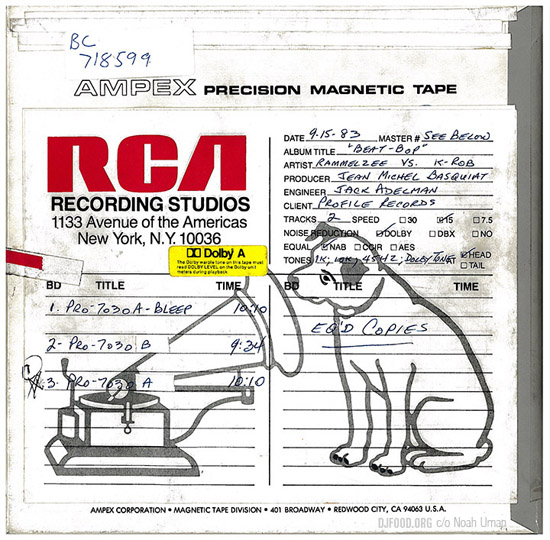
Hip hop reissue expert Noah Uman recently unearthed Profile Records’ original master tape of the ‘Beat Bop’ single when he helped officially re-release it after decades of bootlegs. Originally licensed from Basquiat and rush-released in a standard Profile label house bag rather than the Jean-Michel picture sleeve – a move they seriously came to regret as he’d offered to paint them a new one – Noah has rightfully reinstated the illustrated cover. The no-frills master tape box was taken from Jean-Michel’s copy, reputed to have gone on much longer than the 14 minutes on the single but faded out because of the limited time a 12" disc side can handle.
You can see Ramm at the end of Charlie Ahearn’s Wild Style, a somewhat glamourised take on hip hop’s birth in the Bronx and the first Hollywood film to document the movement in the theatre. He’s waving a shotgun onstage during the amphitheatre scene, trading rhymes with Shock Dell in shambolic style as Grandmixer D.ST cuts it up and Rock Steady work the floor. Here is where most frames of reference end for Ramm, first generation, ‘old school’ but of course there’s much more. The most hardened heads will be familiar with dubs of radio conversations like the Tellus Tapes, creaky VHS clips of club freestyles uploaded to YouTube or the Slinky Gym School single he featured on shortly after ‘Beat Bop’.
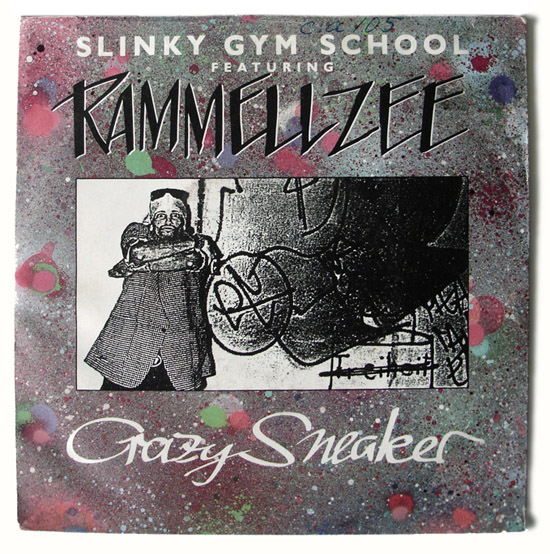
The 1985 Death Comet Crew 12" on Beggars Banquet has some form, the track ‘At The Marble Bar’ inspiring a label of the same name in the late 90s, as does the Material-produced Gettovets album with Shock Dell on 4th & Broadway in the late 80s. The ‘vets album is a genuine curio, so wildly out of step with the times as far as the Bomb Squad, Marley Marl or Mantronix sounds of that era were concerned. Had it appeared, say, three years earlier, its mix of drum machines and rock guitars might have been hailed as revolutionary alongside Run DMC’s early efforts. Witness the cover where Ramm sports one of his early Garbage God outfits, homemade creations scavenged from the detritus around his old home and studio, The Battle Station, in the Tribeca, New York. After this Rammellzee largely disappeared from the music scene for nearly a decade, only popping his head above the parapet to guest on tunes by Sly & Robbie, Bill Laswell’s Material project and a lone Lords Of The Underground cut.
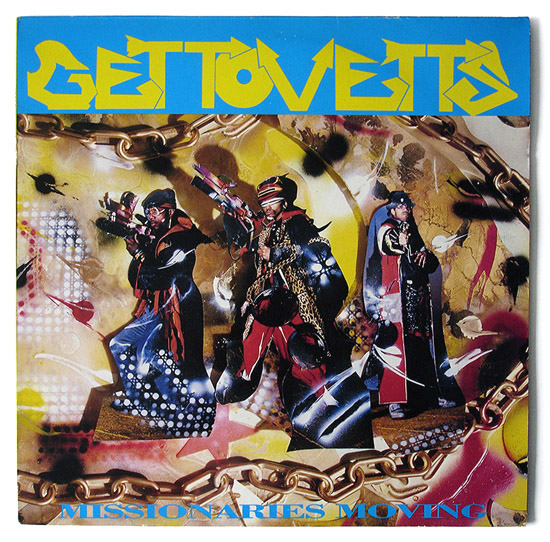
The first rumblings of a reappraisal were in the UK and Europe when James Lavelle invited Ramm over to recording sessions for his UNKLE project, when a pre-DFA Tim Goldsworthy was in the producer’s chair. With his magpie’s eye on the more avant garde end of the old school, and having already resuscitated Futura 2000’s career via MoWax’s record sleeves, Ramm was an obvious choice for Lavelle. The result was ‘Rock On’ – most notably the John King-produced ‘Nutcracker Mix’ – where several phrases are repeatedly looped or scratched throughout. One is tempted to wonder if the recordings didn’t quite go to plan as there is so little of Rammellzee in there and scant mention of his name on any of the credits. He also popped up on two tracks for New Flesh For Old’s second album, Understanding, on Big Dada in 2002. The group’s producer, Part 2 – a longtime visionary graffiti artist in his own right – was particularly influenced by Ramm’s school of thought and once bought him to the Ninja Tune offices in South London when they were collaborating. There were no costumes, no theories, just this imposing monk-like figure, dressed in a floor-length black robe and do-rag. A humble, polite guy with a warm manner. We probably exchanged nothing more than a handshake and a hello but I’m glad I happened to be passing through at the same time they were that day.
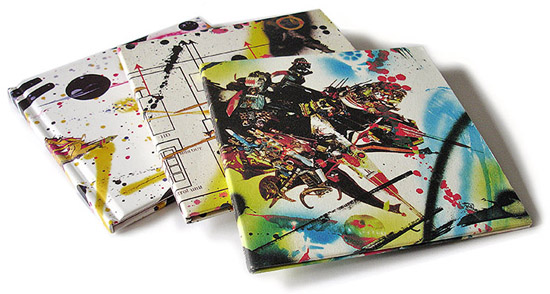
A year later and he was in Japan where he collaborated with DJ Kensei and made some of what he termed, "the best records I think I’ve done in about 20 years". Hopping from label to label throughout his career, Ramm never stayed in one place for more than an album and any attendant singles but Tokyo’s Tri-Eight Recordings managed to get an album, mini book, DVD and single out of him, beautifully packaged and overflowing with his art. In this bizarre Japanese SSTV interview from around 2004, he makes his entrance in full battle gear at around the 3.35 minute mark and proceeds to lay a heavy dose of science on his host whilst an interpreter valiantly tries to keep up.
Ramm was back and on a roll, around the same time back in the west the German label, Gomma, released his The Bi-Conicals of… album where he reunited with K-Rob after 20 years on the tempo-hopping sequel to ‘Beat Bop’ as well as Shock Dell on another cut. Later there were thrash, rap ‘n turntablism outings with Praxis which showcased his lyricism against a metal backdrop rather than a hip hop one. In a lot of his guest spots it seems as though he doesn’t fit in but doesn’t care, happy to be given a platform to preach his gospel no matter what form it takes musically. Funk, electro, metal, break beats or whatever the day’s flavour of rap was, it didn’t matter, the message was the same. Even on ‘Beat Bop’ he dominates the recording, K-Rob doing his best to get some air time amongst the torrent of words and styles. Many have noted that he was one of a kind and it’s impossible to disagree. He always spoke of arming letters for battle, a war with words, turning graffiti arrows into missiles. One of a kind? More like a one-man army.
Earlier this year I was surprised to be followed by @therammellzee on Twitter, "How can this be?" I thought and duly followed back. The account led to the news that London based art label and publisher Gamma Proforma were releasing a series of 12"s of Rammellzee’s final unreleased album, Cosmic Flush. According to Ramm, this was actually a form of space menstruation otherwise known as Ovulization. His Cosmic Flush theory had been around for years in interviews as something the Garbage God, The Wielder had to deal with in the space and time saga Ramm had devised. Slowly, the 12"s began to trickle out, each track from the album receiving its own single plus remix, instrumentals and cover design by a visual artist, including signed print editions of the cover art.
It’s a labour of love for Rob Swain, head of the label, who I asked about the intricate format of the release.
"We wanted to give him the send off he deserved, the artists were selected from people who knew him and others who were inspired by him, that shared that lineage."
How did the Cosmic Flush album project come to your attention? Was it finished when you first heard about it or still a work in progress?
"The album was finished back in 2008, it came to us via the producer Jonah Mociun and Ian Kuali’i who was a member of Ramm’s crew."
The way you’re releasing this is a huge undertaking, did you feel he and it deserved something above the norm considering the way he operated as an artist?
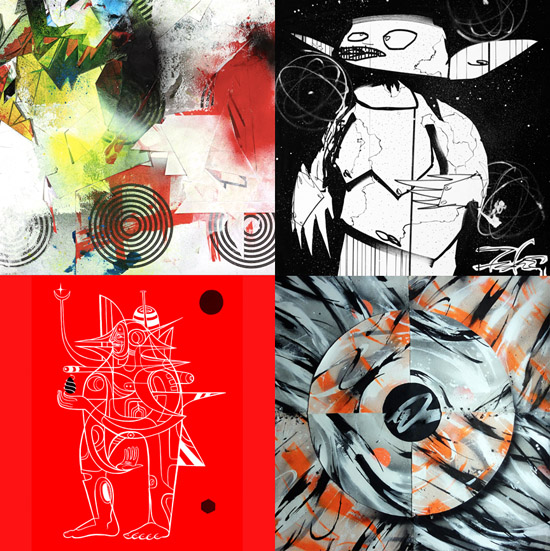
"When he passed away I expected something to happen [and] that never really appeared. He deserves significant recognition for his work. There are few who come close to what he achieved, a pioneer in music, sculpture, writing and painting."
Did you know or ever meet him before he passed away?
"We tried to secure a piece for the Futurism 2.0 show back in 2011 (but) I never met the guy, know a few people who did. Sounds like one of a kind, sadly missed by many. I think he was more widely respected by writers, for his visual work, Gothic Futurism, his grand concepts. ‘Beat Bop’ is great but he was so much more than that. This album, Cosmic Flush was one of the rare instances where he was putting down his sonic vision."
Do you hope his legacy will be illuminated after or because of this?
"The world will eventually catch up and realise his influence, that’s how it goes when you pave the road."
What will happen when all seven 12"s are finally released? Will there be some sort of box set or a CD compilation?
"The last record will come with a box, there won’t be many of them, maybe 250."
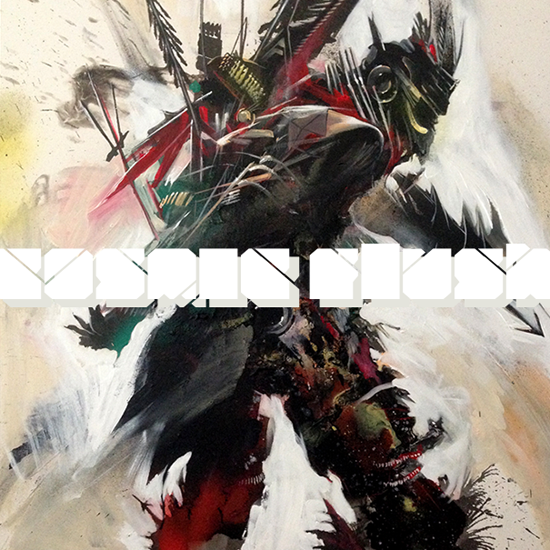
The Gamma Proforma releases have bought him back into focus from the old schoolers who grew up in rap’s golden age to those who’ve only heard his name in passing, cropping up on lists of hip hop’s most influential MCs and writers. The quality of artists involved in the project speaks volumes of how highly he’s regarded; Delta, Edan, Futura 2000, Divine Styler, She One, Mike Ladd, Kofie 1, Doze Green to name a few. That’s some pretty serious left field talent right there. The record itself is as forward-thinking as anything being released today, no mean feat considering its already seven years old. It’s not always an easy ride but his presence dominates the album, his unique flow and distinct vocal styles randomly coming to the fore: the laid back pimp drawl, the intense strain that squeezes every syllable from clenched teeth or the nasal ‘gangsta duck’ style that gave us the immortal line, "B-Boys making with the freak freak."
Through Ramm’s intricate, confusing, yet always unique recording career you can hear why he’s spoken of in such reverential tones. The evolution of styles through the decades, some now horrendously dated, show Ramm was in there, albeit under the radar some of the time, sowing the seeds of his Iconoclast Panzerism theories wherever he went. Whether in his music, his writing or through his art and sculpture, he made no concessions and once he was in full flow the metaphysical and typographical equations tumbled out of him. Just check the mind-boggling Gothic Futurism interview he gave back in 1995, recently unearthed by James Lavelle for the MoWax 21st anniversary book, for proof that he was the hip hop equivalent of Sun Ra. You either followed him or got off the bus, but for those willing to stay on board there was no one else who drove quite like this.
Cosmic Flush is available from Gamma Proforma and the exhibition of the same name runs from December 10-22, 2015 at the Magda Danysz Gallery in London

